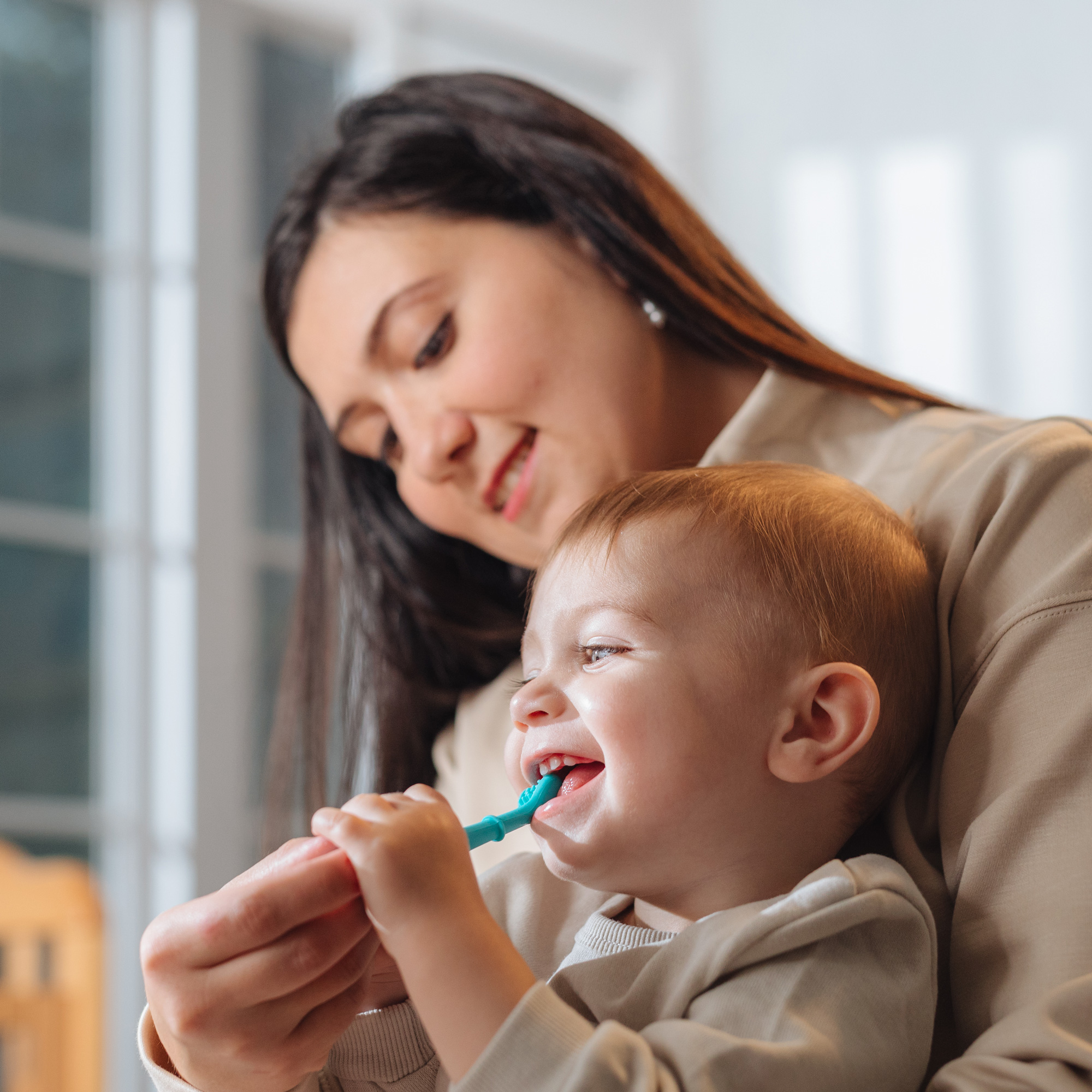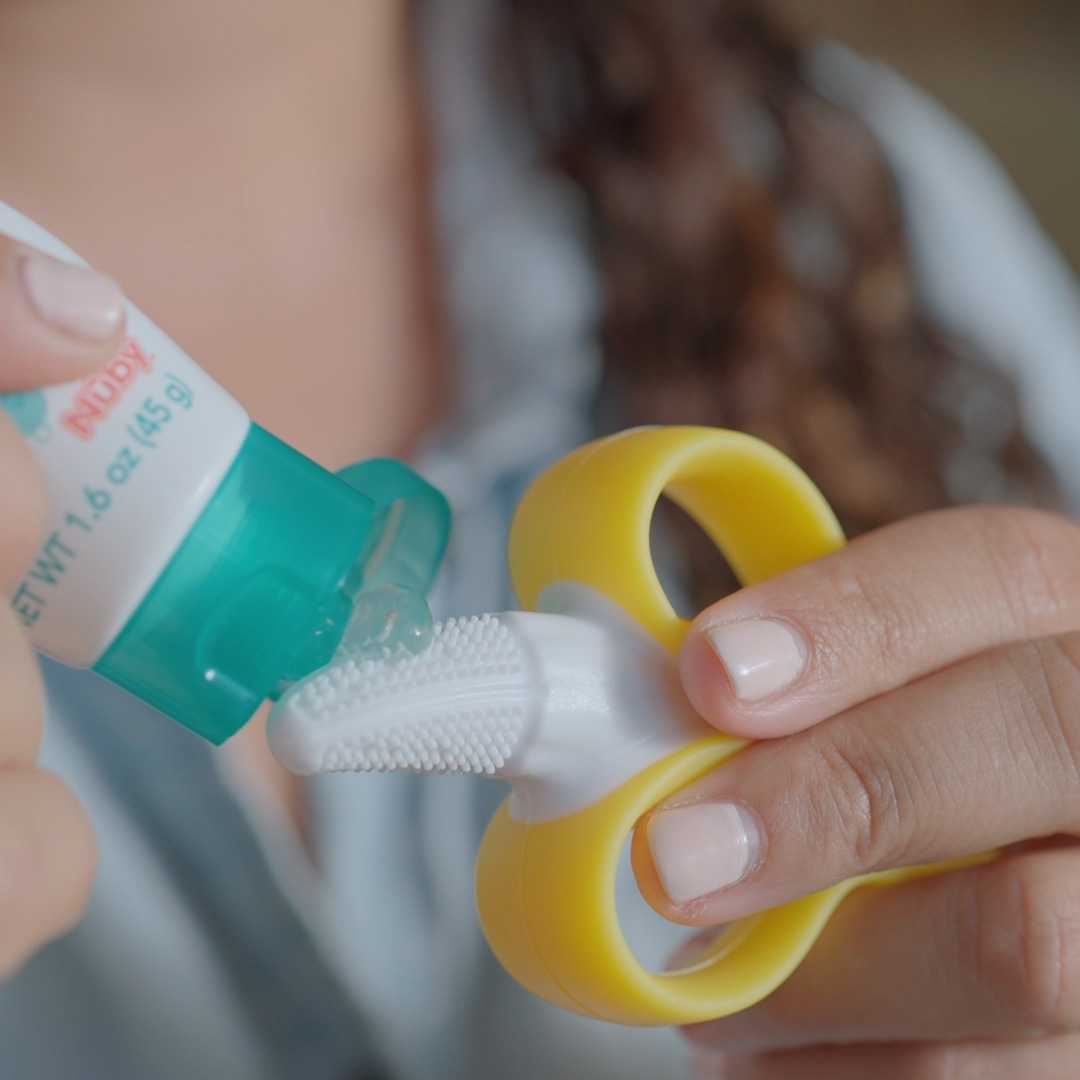What is Baby Bottle Tooth Decay and How Can You Prevent It?
Baby bottle tooth decay, or bottle rot, is a common problem caused by using a baby bottle as a sleep aid. This practice can lead to severe tooth decay and other oral health issues.
According to the National Institute of Dental and Craniofacial Research, nearly one in four (23%) children aged two to five have tooth decay.
Baby teeth may “only” be placeholders for adult teeth, but without healthy teeth, your baby will have problems speaking, chewing, and smiling. Tooth decay can lead to pain, infection, and eventually tooth loss, impacting your child's overall development.

What Causes Baby Bottle Tooth Decay?
Baby bottle tooth decay most often occurs in the upper front teeth, and it happens when baby teeth come in frequent contact with too much sugar. Even natural sugars in breast milk and formula can cause cavities by bacteria feeding on them.
Tooth decay occurs when bacteria in the mouth make acids that damage the enamel, the tooth's protective layer. If left untreated, dental decay can cause gum disease, cavities, and even tooth loss.
This often happens when babies are given bottles right before naptime or bedtime and fall asleep with the bottle in their mouths. This constant exposure to liquids from the bottle, especially if it's not just water, can lead to premature tooth decay.
Signs and Symptoms of Bottle Feeding Tooth Decay
Early detection is crucial in managing baby bottle tooth decay. Here are some signs to watch out for:
- White Spots on Teeth: These small white areas on the tooth enamel might be the first indicator of decay.
- Yellow, Brown, or Black Spots: White spots may progress to brown or black discolorations if left untreated, signifying more advanced decay.
- Sensitivity: If your baby shows discomfort when chewing or touching a specific tooth, it could be a sign of pain caused by decay.
- Visible Decay: This may appear as holes or breaks in the teeth, indicating severe damage.
Keep in mind that tooth decay often affects the upper front teeth first. However, if left unchecked, it can spread to other teeth as well.

How to Prevent Baby Bottle Tooth Decay
The good news is that tooth decay from bottle feeding is easily preventable. Here are some simple strategies you can implement:
- Avoid Bedtime Bottles: It’s best to avoid putting your baby to sleep with a bottle altogether. Bedtime bottle-feeding can increase the risk of wheezing and asthma in infants with a family history of allergies.
- Transition to a Cup: Aim to transition your baby to a cup by their first birthday. This can help reduce the risk of tooth decay and promote healthy oral development.
- Practice Good Oral Hygiene: Clean your child’s gums with a clean cloth or use a gum cleaner after feedings to remove any milk or formula remaining on the gums. If your baby’s teeth have erupted, use a soft-bristled toothbrush instead.
- Limit Sugary Drinks: Water is the safest drink for your baby. Sugary drinks like juices or even milk contribute to the development of cavities.
- Use a Pacifier Rather Than a Bottle: Using a pacifier to soothe your baby can help reduce the risk of tooth decay. When babies suck on a bottle, especially one filled with sugary liquids, bacteria can spread more easily across their teeth, increasing the risk of cavities.

Following these guidelines can help protect your baby's oral health and set them up for a lifetime of healthy smiles.
Treatment Options for Baby Bottle Tooth Decay
Early intervention can prevent further damage and protect your child's teeth. If you notice signs of baby bottle tooth decay, consult a pediatric dentist.
.Some of the treatment options you can expect are:
- Fluoride treatments: Fluoride strengthens tooth enamel, making it more resistant to decay.
- Dental fillings: When cavities are present, fillings can restore the tooth structure and prevent further damage.
- Preventive sealants: These thin coatings create a barrier against bacteria and decay.
When to Consult a Pediatric Dentist
A strong foundation for oral health begins at home. As your child grows, it's essential to establish a routine of good oral hygiene practices. Consider scheduling your child's first dental visit within six months of their first tooth erupting.
The American Academy of Pediatric Dentistry recommends that children have their first dental visit by their first birthday or even sooner if there are signs of tooth decay.
FAQs
What is baby bottle tooth decay?
Baby bottle tooth decay refers to cavities on a baby's teeth caused by a baby bottle filled with sugary drinks like milk or juice as a sleep aid.
How can I prevent bottle rot in my baby’s teeth?
Avoid putting your baby to bed with a bottle filled with sugary drinks to prevent tooth decay from bottle feeding. Additionally, clean your baby's gums after each feeding or brush their teeth if they have erupted.
Can bottle feeding cause cavities?
Yes, bottle feeding can cause cavities if sugary liquids are left on baby teeth for extended periods, especially during sleep, when saliva production decreases.